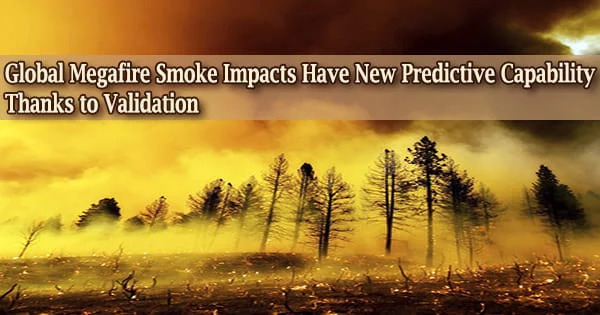Better predictions of how emissions from these large-scale catastrophes would behave and affect temperatures are made possible by new research that models the smoke from two recent megafires. Increased focus has been placed on the intensity and duration of wildfire emissions, which rival those of some volcano eruptions as they grow more frequent as a result of climate change.
Megafires were originally uncommon, but they are now more frequent. In the United States, wildfires now devour an average of 1,000 more acres of forested area annually than they did 40 years ago.
Climate change is one of the primary factors, according to scientists, behind the rise in megafires. In the West, snowmelt occurs earlier in the year than it used to due to the warmer, dryer weather. As a result, the dry season when woods are most at risk of fire lasts longer.
Megafires in Australia in 2019–2020 and British Columbia in 2017 released enormous amounts of smoke into space, enabling the first-ever in-depth satellite- and ground-based observations of such catastrophes.
A team led by Los Alamos National Laboratory analyzed the behavior and effects of the smoke as it moved across the world after rising from the lower atmosphere into the high-riding stratosphere using that data as validation. Journal of Geophysical Research Atmospheres published the study.
“This is the only time we’ve tracked the global scale smoke phenomenon with satellite and ground-based observations, which allows us to improve the model and understand the impact,” said Manvendra Dubey, project lead and co-author of the paper published this week in the Journal of Geophysical Research: Atmospheres. “The models and measurements are coming together to enhance predictability.”
The models are the only way you can forecast their smoke effects. For instance, observations of the Australian fire showed that black carbon got a boost from solar heating and rose to 30 kilometers in the stratosphere, which made the plume last longer, about 16 months. Our model accounts for this self-heating phenomenon predicted by the late Robert C. Malone at Los Alamos in the 1980s and our new study unequivocally validates it.
Manvendra Dubey
Dead wood accumulated on the forest floors throughout the 20th century as forest rangers attempted to put out every fire, much like building a bonfire. Now, a wildfire that starts in one of these previously unburned regions is more likely to grow larger and hotter as it burns, maybe developing into a megafire.
“As fire regimes change and enter new paradigms of behavior under future climate change, data from past fires can’t be used for prediction and assessment,” said Gennaro D’Angelo, a co-author on the paper and research scientist at Los Alamos.
“The models are the only way you can forecast their smoke effects,” Dubey said. “For instance, observations of the Australian fire showed that black carbon got a boost from solar heating and rose to 30 kilometers in the stratosphere, which made the plume last longer, about 16 months. Our model accounts for this self-heating phenomenon predicted by the late Robert C. Malone at Los Alamos in the 1980s and our new study unequivocally validates it.”
Plumes have cooling effect
According to observations, the 2019–2020 Australian megafire released enormous volumes of smoke and soot into the sky, which had an effect on world temperatures, as this study demonstrates.
The Australian plume cast long-lasting shadows. This resulted in a 0.2 degree Celsius decrease in temperature in the southern hemisphere, which has consequences for models of global climate change.
The smaller British Columbia fires plume from 2017 did not cause a similar cooling. The study demonstrates how and when megafire smoke, like volcanic sulfate and ash injections, effects the global climate.





